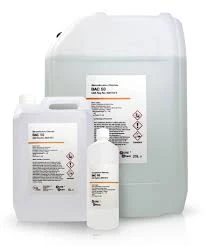Structures and Applications of Diethylene Triamine Pentaacetic Acid in Industrial Uses
Understanding Diethylene Triamine Pentaacetate Applications and Importance
Diethylene Triamine Pentaacetate (DTPA) is an important chelating agent widely utilized in various industries due to its ability to bind metal ions. As an organic compound derived from ethylenediamine and acetic acid, DTPA has found considerable applications in fields such as medicine, agriculture, and environmental science. This article explores the properties, uses, and significance of DTPA in various sectors.
Chemical Structure and Properties
DTPA, with the chemical formula C10H19N3O10, consists of five acetic acid groups attached to a central diethylene triamine backbone. This structure allows DTPA to effectively form stable complexes with metal ions, preventing them from precipitating out of solution or from participating in unwanted chemical reactions. DTPA is particularly effective in binding divalent and trivalent metal ions, such as calcium, magnesium, and lead, making it a versatile tool in both industrial and laboratory settings.
One of the key characteristics of DTPA is its high stability constant, which refers to its strength in forming complexes with metals. This property is crucial when considering its application in chelation therapy, soil remediation, and even in maintaining the quality of various products.
Medical Applications
In the medical field, DTPA is primarily used in chelation therapy, which is a treatment for heavy metal poisoning. Heavy metals like lead, mercury, and cadmium can accumulate in the body and lead to serious health issues. DTPA effectively binds these toxic metals, facilitating their excretion from the body and reducing toxicity levels. Health professionals often administer DTPA intravenously for acute heavy metal poisoning cases.
Moreover, DTPA is utilized as a radiopharmaceutical agent in nuclear medicine. It is combined with technetium-99m to create a compound used in imaging studies, such as bone scans. The DTPA compound helps to visualize blood flow and organ function, providing valuable diagnostic information for healthcare providers.
diethylene triamine penta

Agricultural Uses
In agriculture, DTPA is increasingly used to improve the bioavailability of micronutrients essential for plant growth. Many crops require trace elements like iron, manganese, zinc, and copper to thrive, yet these nutrients are often present in forms that are not readily accessible to plants. By chelating these metals, DTPA enhances their solubility in soil, allowing plants to absorb them more effectively. This application not only boosts crop yields but also contributes to sustainable farming practices by reducing the need for excessive fertilization.
Furthermore, DTPA is used in foliar sprays and soil amendments to address specific nutrient deficiencies, ensuring that plants receive the right nutrients at the right time. This targeted approach helps promote healthier crops and can lead to better food quality.
Environmental Applications
DTPA plays a crucial role in environmental science as well. It is utilized in soil remediation projects aimed at detoxifying soils contaminated with heavy metals. By adding DTPA to contaminated sites, remediation specialists can enhance the mobility of heavy metals, making them easier to extract or immobilize, thus preventing them from leaching into groundwater.
Additionally, DTPA is used in wastewater treatment processes to remove heavy metals from industrial effluents. Its ability to form stable complexes with metals allows for more efficient treatment and ensures that discharged waters comply with environmental regulations, thereby protecting aquatic ecosystems.
Conclusion
Diethylene Triamine Pentaacetate is a multifaceted compound with significant implications across various sectors. Its effectiveness as a chelating agent makes it indispensable in medical treatments, agricultural practices, and environmental sustainability. As industries continue to explore innovative ways to utilize DTPA, its importance is likely to grow, further enhancing its role in promoting health, improving agricultural productivity, and addressing environmental challenges. Understanding and harnessing the capabilities of DTPA will remain crucial as we navigate the complexities of modern science and industry.
-
Water Treatment with Flocculant Water TreatmentNewsJun.12,2025
-
Polymaleic AnhydrideNewsJun.12,2025
-
Polyaspartic AcidNewsJun.12,2025
-
Enhance Industrial Processes with IsothiazolinonesNewsJun.12,2025
-
Enhance Industrial Processes with PBTCA SolutionsNewsJun.12,2025
-
Dodecyldimethylbenzylammonium Chloride SolutionsNewsJun.12,2025





